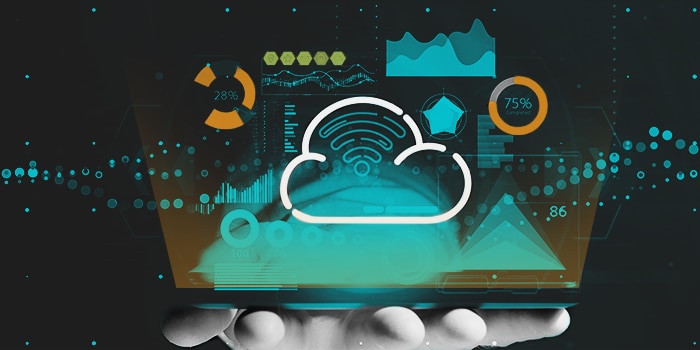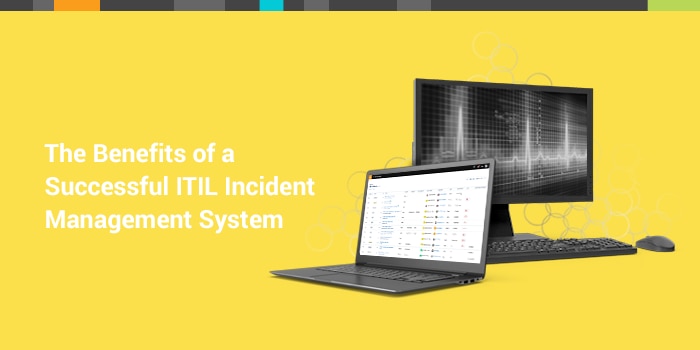According to a study conducted by the Service Desk Institute, Enterprise Service Management (ESM) strategies were adopted by 68% of organizations by mid-2021. This was a 58% increase from two years prior when ESM solutions were far less prevalent. So, what drove such a dramatic increase in ESM strategy adoption? Most likely the overwhelming benefits of ESM.
ESM is the practice of applying IT service management (ITSM) principles and capabilities across the enterprise – improving service delivery for the non-IT departments of your business. Key to understanding this concept is to view every department as both a consumer and provider of services. Employees in one department frequently require assistance from employees in another department. Someone in Marketing (consumer) will need help from HR (provider) to change their name. Someone in HR (consumer) will need help from Legal (provider) to do a legal review of a new HR policy. However, because every department does things differently, there is very little consistency in how you might ask Marketing vs HR for help; you probably can think of these examples today.
So, what types of services do departments offer? Some examples include a central knowledge hub from HR with frequently asked questions about benefits, an access request form from Facilities for temporary visitors to the office, a review request form from Legal to provide contract redlines, and a website bug ticket form from Marketing for users to report errors on the corporate website. ESM takes the better practices of ticketing, service request, and knowledge centralization of IT and adapts them to non-IT departments, creating a better experience for employees.
With ESM, customer and employee requests are kept from falling between the cracks and becoming sidelined unintentionally.
This blog is the first in a series on the importance of ESM and how to adopt ESM to drastically improve business processes.
Why ESM is critical to success
Implementing ESM can be a crucial part of streamlining critical processes within your organization. Since each department is both a provider and a consumer of services, ESM gives these departments the ability to make their services more easily available to their consumers.
ESM gives your departments the power of:
- Structured service delivery: A way to provide consistent processes across all departments, reducing operational chaos and ensuring standardized service delivery.
- Service accessibility: Enable employees to request services from multiple domains through a single, user-friendly interface, accessible by a centralized company-wide service portal.
- Visibility of service quality: Provide real-time insights into service quality and enable proactive improvements.
- Accelerated service delivery: Streamlined service delivery times, leading to quicker resolutions and improved user satisfaction.
- Data privacy: Protection of sensitive information, handled with the same level of security and compliance throughout the organization.
Adopting an ESM solution can also support an overall change initiative or a desire to overhaul and improve existing processes. By implementing ESM, your business can maintain smooth and consistent operations while providing an exceptional user experience. Furthermore, adopting ESM can lead to reduced costs, improved user satisfaction, and increased efficiency while supporting a company’s ability to maintain and show compliance to regulatory bodies.
Core principles of ESM
While many companies of all sizes have either adopted or are considering adopting ITSM solutions, not everyone has extended their deployment to the level of ESM. Through several key principles, ESM solutions can propel enterprises to a level of efficiency and clarity they have always dreamed of achieving.
Efficiency
Without ESM, employees can be bogged down in error-prone manual processes that take entirely too much time and produce inconsistent results. Today, nearly every department is resource constrained while your company continues to grow, making it difficult to keep up with the demands of more employees. Adopting an ESM solution for your enterprise can streamline processes ensuring consistent and efficient service delivery. Both critical and non-critical processes should be as efficient as possible to ensure consistent, timely responses. And with an ESM solution that integrates artificial intelligence and machine learning as well, processes can be further improved.
For example, instead of sending an email saying "Hey, I need this update on a website" - the Web/Marketing team can set up a "Web Change Request" form requiring all information needed from the requestor to develop the webpage with minimal back and forth. Then those requests are tied to a pre-defined "workflow" set up by marketing/web, that has all of the necessary work steps, notifications, and approvals required for that change to go from intake to production. Streamlining those processes makes things a lot more efficient and eliminates errors and timely back and forth between departments.
With improvements in efficiency, employees will be required to manage fewer manual processes, freeing their time to address more critical issues. With well-designed ESM fitting your business needs well, you can see a return on investment quickly as processes are expedited, employees are free to focus on serious issues, and time-consuming issues are quickly addressed improving user experience.
Standardized Service Delivery
Many departments approach tasks ad-hoc, using their own separate tools, and everyone has to learn how to interact with every department differently. ESM strategies are incredibly beneficial for enterprises to adopt because they enable organizations to deliver employee services easily and efficiently. ESM can improve service delivery and execution because it automates and simplifies many manual processes – freeing up employees and creating efficiencies where none previously existed.
By having a standard way of consuming services from a service provider (a department) it makes it easier to interact from department to department and service delivery becomes standardized across the enterprise. Standardized service delivery ensures all departments are experiencing the same delivery and can rely on consistent results.
Improves knowledge management and support
Too many departments today have really important information, key to the success of many employees, that is difficult to find or sometimes exists only in someone’s head. When knowledge is not centralized and managed it can make it harder for new employees to be efficient and autonomous, while also increasing the risk of processes being lost or forgotten. For example, information on critical processes residing with one person who, upon leaving your company, takes it all with them can be highly disruptive to any organization. Similar to the concept of having a single source of truth, adopting ESM for knowledge management means your employees will have a single source to find all the knowledge they may need within each department.
Additionally, adopting ESM for knowledge management can help break down silos between departments as all employees can access the same information and understand processes in place to complete tasks and requests. No longer will employees need to contact a specific person in a specific department to complete a task or gather needed information. Instead, they can go to the single source of truth for that department and find anything they need to know to complete their work. Once again, this increases efficiency and promotes consistent outcomes.
Enhanced user experience
As briefly mentioned in the two previous principles, user experience is greatly improved when the speed and accuracy of issue resolution are improved. Before we had ESM, ITSM, ERP, etc. solutions, processes were manually managed and executed, often resulting in poor execution or simply taking far too long to be resolved. Furthermore, employees potentially had no idea how to even get their question answered. If you asked a colleague “Where do you go to find out what our HR policy is on PTO," they might not be able to tell you. Leading you to maybe try and search futilely or give up all together. When access to information and help is difficult, employees often default to just not getting help at all - and trying to wing it, which also makes things less enjoyable for end users.
With an ESM solution, employees have access to the knowledge and systems required to complete tasks and resolve their needs. If they cannot resolve them alone, the employee can submit a ticket or request they are confident will garner a response from someone who can help with their issue. Self-service technology provides your employees with the power to solve their own issues and the ability to reach the proper people when they cannot.
You can think of this like a chat box on your favorite online shopping website. When you have an issue or request you cannot manage yourself, you can chat with the company’s customer service team and resolve an issue in real time. Another way this enhances user experience is through a constant feedback loop with users. So, after a user engages with a department, the solution can give them the ability to rate their interaction and provide feedback, giving the department information to incrementally improve their services. With the same self-service technology built into the ESM solution, employees feel a greater level of satisfaction with their experience.
Simplicity through automation
A huge source of frustration for employees and customers is human error. Unfortunately, if humans are managing processes, human error is unavoidable. By implementing an ESM solution, important processes often found to be time-consuming or error-prone can be automated, or at least predefined, reducing the likelihood of errors. Once again, an ESM solution improves processes and decreases the likelihood of issues and errors, resulting in improvements across the board. By simplifying previously complex processes, employees will have an improved experience and be able to focus on more pressing issues.
Aligning ESM to business objectives
IT Service Management can be fairly complex to implement successfully. Since ESM is an adaptation of ITSM, it too could be unnecessarily complicated depending on your chosen software vendor and partner. When thinking about expanding ITSM beyond IT, we recommend starting above all else with culture and the people. Understand how existing processes within a given department keep them from achieving their business goals. Then, when looking for software to help augment and accelerate your strategy, be cautious of ITSM-style software that is overly complex for non-technical teams to implement. When non-IT people are used to software like Asana, Workday, Wrike, Trello, and Monday.com they’re going to want intake requests, ticket tracking, and knowledge bases that are extremely simple to use that take no coding efforts to make changes to.
To combat these potential issues, adopting an ESM strategy should be approached as a customer-centric strategy optimized to improve service delivery – regardless of the service. Aligning your ESM strategy to business objectives, and the true needs of the end-users, should be a key consideration in the adoption and implementation process, ensuring any automated processes created and changes made directly respond to existing issues and are designed to address employee concerns and frustrations.
To successfully implement an ESM strategy, the solution must put your employees first and foremost, delivering a consistent experience they can depend on.
We just recently released a major enhancement to SolarWinds Service Desk that extends our offering beyond IT. We feel we’re one of the easiest to use Service Desks on the market and with ESM we’ve made that even easier for your non-IT departments. If you’re interested in learning more, signup for our webcast showcasing ESM and check out our feature page.




